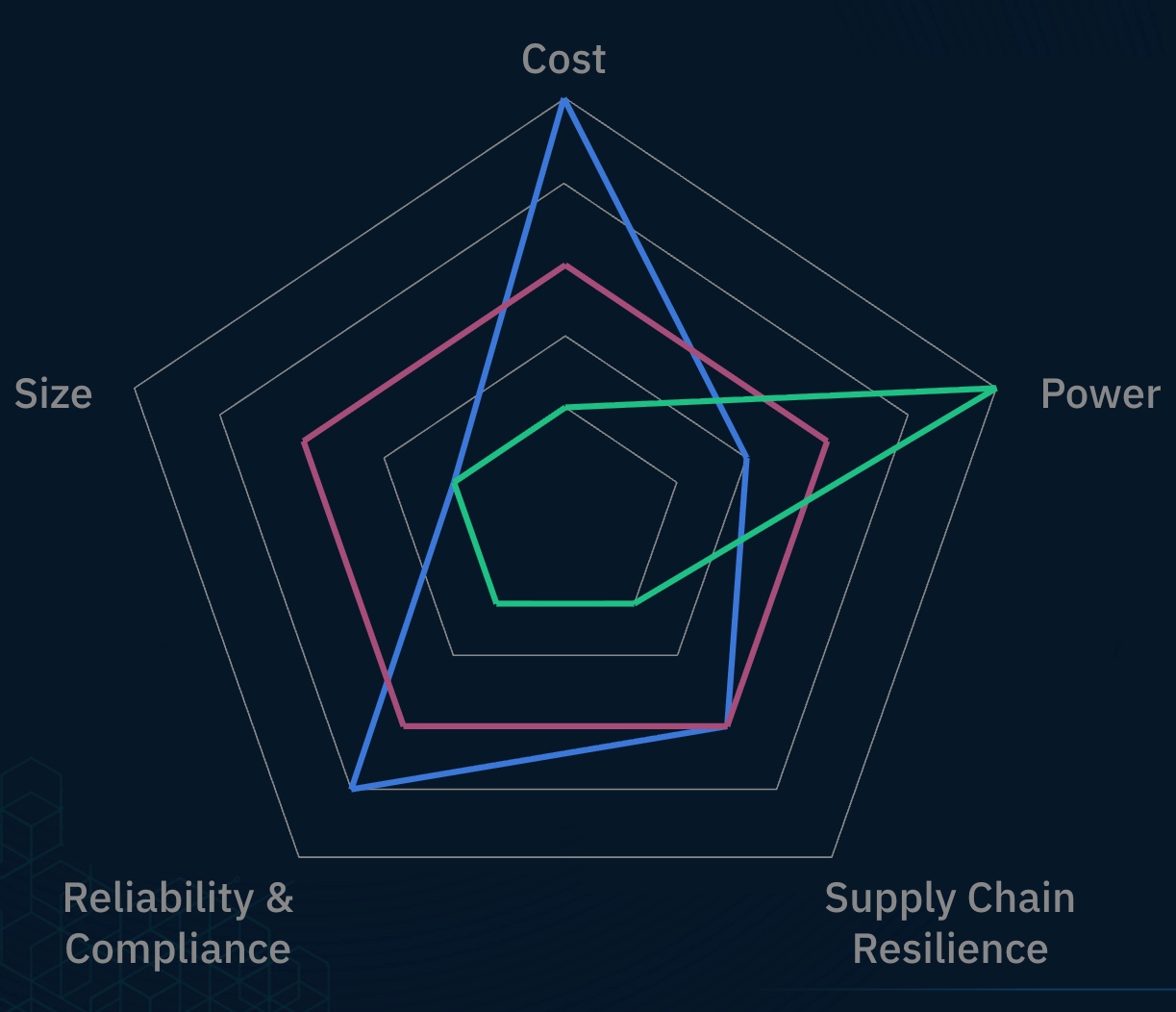Electronics design is a science – precise and methodical – but it’s also a daring exploration, a quest to discover the boundaries of what’s possible.
Yet too often, the slow, manual process of circuit design stifles experimentation, the fuel of innovation that shapes market leaders in aerospace, defense, robotics, and consumer electronics.
In this article, I’ll explore why manual design methods limit hardware innovation and how AI and automation can reignite it.
The Tedious Trek of Manual Circuit Design
The journey of electronics design typically begins with a block diagram to document the requirements – sketched in Visio, PowerPoint, or on a whiteboard. That diagram is ultimately translated into a circuit that must work reliably and meet real-world constraints like cost, size, power, performance, and supply.

Every step introduces challenges:
- System architecture development: Deciding what functional blocks will be needed to meet the system’s requirements and how these functional blocks will relate to each other.
- Major component selection: Choosing key components ensuring compatibility with the sum total of other components being chosen.
- Circuit design: Designing functional circuits by researching components, exhaustively interpreting datasheet specs, mapping interfaces, performing pin assignments, sizing passives, calculating electrical responses, and ensuring accurate ancillary components like pull-ups, pull-downs, decoupling etc.
During design, we’ll explore new components and functional blocks, but time limits us to shallow research. For some functions, we’ll reuse what’s already been proven – blocks or components from past designs.
In practice, this means most designs are functional but compromised – they leave vast design spaces and their benefits unexplored.
Navigating Tradeoffs to Achieve an Optimized BoM
If researching components and functional blocks is a trudge through a swamp, then optimizing a design is like panning a riverbed for hidden gems. The real prize lies deep down: an optimized system-level design where every component and design decision factors tradeoffs across design dimensions: cost, performance, power, size, availability, and reliability.
Navigating Design Tradeoffs
The process to design an optimized circuit requires navigating and understanding competing tradeoffs. When one design dimension is prioritized, another is affected, often in ways that aren’t obvious or easy to uncover.
Because we must explore tradeoffs manually (flipping between datasheets and spreadsheets) we rarely see the full picture. Countless compromises are made, leaving optimized designs unexplored.

As an engineer recently admitted to me:
“We know there are better options out there, but designing them would take months. So we settle for a design that works.”
In an ideal world, we could surface hidden gems instantly:
- One design perfectly optimized for BoM cost.
- Another tuned to minimize power.
- A third that strikes a balanced tradeoff across size, cost, and performance.

And we’d see the tradeoffs clearly:
- If I optimize for cost, what’s the delta in power and board area?
- If I weight cost/size/power equally, where does the balance land?
- Can I push BoM cost down without impacting reliability/compliance limits?
The answers to these questions are hidden beneath the stones.
Leaving Trillions of Stones Unturned
Online catalogs track 20 - 40 million part numbers, each with tens to hundreds of electrical, package, lifecycle, and configuration attributes. Combine choices across the MCU, radio, regulators, memory, and sensors and the design space explodes into trillions of candidate BoMs – as countless as the stones covering the Earth.

In practice, teams put deep work into fewer than 50 BoM options before schedule says “stop”.

Trillions of alternative design choices — and the innovation, performance, and profit they hold — remain hidden.
Paying the Price for Unexplored Design Paths
With few design options considered, compromised results are predictable:
- Price War Defeat – Higher BoM costs give competitors the ability to undercut your prices and seize market share.
- Innovation Stifled – Engineers, wary of risk and complexity, avoid advanced technologies, leaving products stagnant while competitors race ahead.
- Inventory Overload – Unoptimized BoMs bloat supply chains with excess stock, tying up capital and amplifying the risk of unsold goods.
- Tech Hesitation – Designers retreat to “safe” component choices, locking designs into outdated simplicity and missing the chance to differentiate.
- Reliability Risks – Shortcuts to save time and cost often lead to fragile, failure-prone designs that erode customer confidence.
What if we could explore all possible designs in the time it takes to review a handful?
How AI-Driven Exploration Can Uncover Hidden Gems
With AI, engineers no longer need to settle for “good enough”. Instead, creativity is amplified to explore the full design landscape. This vision is no longer aspirational – organizations like APAG Cosyst are using automation to explore vast design spaces.
The outcome isn’t just faster design cycles and cost savings, it’s better products:
- Aerospace systems that fly further and last longer.
- Consumer devices that are slimmer, more powerful, and longer-lasting.
- Industrial solutions that are robust against supply chain shocks.
This is the promise of AI-driven exploration: not compromise, but discovery. Hardware design no longer defined by its limits, but by its possibilities. Ready to explore what's possible beyond the constraints of manual design? Schedule a demo with us and see what Circuit Mind’s ACE platform can uncover.















